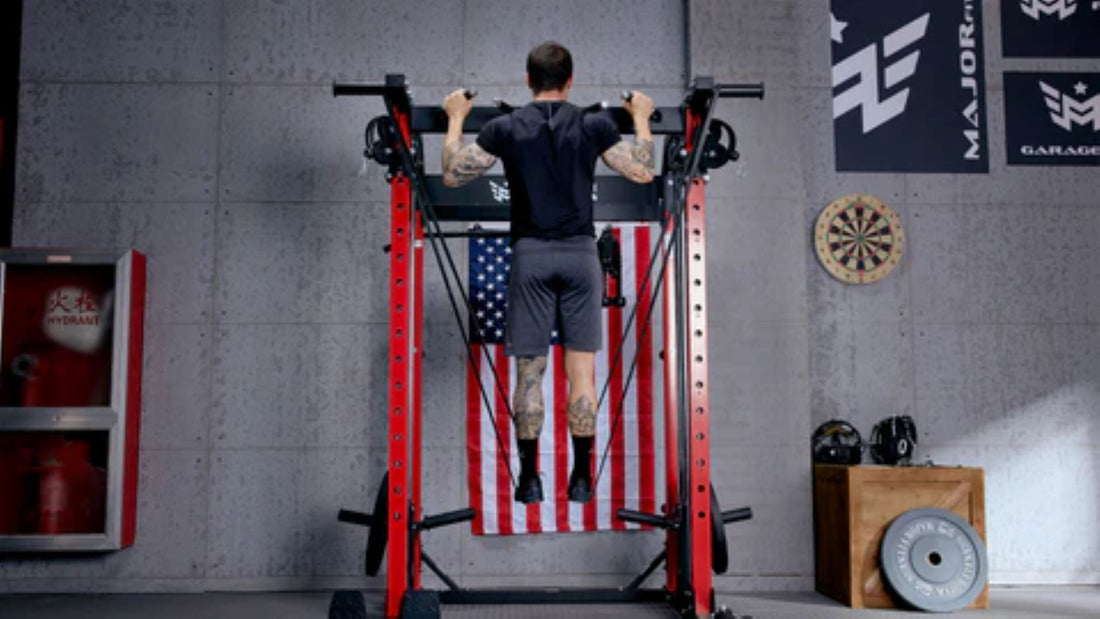
When it comes to strength training, athletes and fitness enthusiasts often find themselves debating between two highly effective exercises: the clean pull and the deadlift. Both lifts are staples in many workout routines, but they serve different purposes and target different muscle groups. So, how do you decide which one is right for you? Read on to discover the key differences, benefits, and how to integrate these powerful exercises into your fitness regimen.
The Basics: What are Clean Pulls and Deadlifts?
Before diving into their respective benefits, it's important to understand what each exercise entails.
Clean Pull
The clean pull is a weightlifting exercise that focuses on explosive power and the improvement of athletic performance. It serves as a foundational movement for the clean and jerk, an Olympic lift. During a clean pull, the athlete pulls the barbell from the floor to their upper thighs while maintaining a posture similar to the setup for a clean.
Deadlift
The deadlift, on the other hand, is a straightforward strength exercise that primarily targets the posterior chain, which includes the hamstrings, glutes, and lower back. The athlete lifts the barbell from the floor to a standing position. It is considered one of the most effective compound movements for building overall strength.
Key Differences: Clean Pull vs Deadlift
The main disparities between the clean pull and the deadlift lie in their execution, muscle engagement, and intended outcomes.
Execution
In a clean pull, athletes focus on generating maximum force in a short amount of time, ensuring that the barbell reaches mid-thigh levels while keeping the elbows straight. Deadlifts prioritize lifting heavier weights with proper form. The barbell is lifted from the floor to the hips in a controlled manner.
Muscle Engagement
Clean pulls emphasize explosive power and speed, targeting muscles such as the traps, upper back, and shoulders. Deadlifts, on the other hand, focus on building raw strength in the lower back, glutes, and hamstrings.
Benefits: Why You Should Include These Exercises
Both clean pulls and deadlifts offer unique advantages.
Clean Pull Benefits
- Explosive Power: Clean pulls are fantastic for developing explosive power, which is crucial for athletes in sports requiring quick bursts of movement.
- Improved Athletic Performance: This exercise benefits athletes by enhancing their ability to produce force rapidly, improving overall athleticism.
- Transitional Lift: It serves as an ideal precursor to more complex Olympic lifts like the clean and jerk.
Deadlift Benefits
- Strength Development: The deadlift is a powerhouse movement for building comprehensive strength, particularly in the lower back, glutes, and hamstrings.
- Functional Movement: It mimics everyday activities and can help improve posture and reduce the risk of injury.
- Versatility: Deadlifts can be modified to target different muscle groups and can be performed with various pieces of equipment like barbells, dumbbells, and kettlebells.

How to Incorporate Both into Your Routine
Including both clean pulls and deadlifts in your workout routine can offer a balanced approach to strength and power development.
Sample Workout Plan
Consider alternating between clean pulls and deadlifts on different training days to maximize their benefits without overworking your muscles.
-
Day 1: Heavy Deadlift Session
Perform 4 sets of 5 reps. Focus on form and lifting heavy weights. -
Day 2: Clean Pull Training
Perform 4 sets of 3 reps. Emphasize speed and explosive power.
By alternating these exercises, you'll ensure you're developing both power and strength in a well-rounded manner.
Common Mistakes and How to Avoid Them
Like any form of weightlifting, clean pulls and deadlifts require proper technique to prevent injury and achieve optimal results.
Clean Pull Mistakes
- Pulling with the Arms: The primary error is using the arms to lift the bar. Instead, focus on driving through your legs and hips.
- Improper Timing: The exercise should be a fluid motion. Make sure to keep the sequence smooth and connected.
Deadlift Mistakes
- Rounding the Back: This is one of the most common mistakes and can lead to serious injury. Maintain a neutral spine throughout the lift.
- Improper Lockout: Ensure to lock out your hips and knees fully at the top of the lift, but avoid hyperextending your lower back.
Final Thoughts
Both the clean pull and the deadlift are invaluable exercises that can help you achieve your fitness goals. Whether you're aiming to build explosive power or add sheer strength, incorporating these lifts into your routine offers significant benefits. Understanding their differences and applications will allow you to tailor your workouts to your specific needs, maximizing both your performance and gains.
So, the next time you're planning your workout, consider the clean pull vs deadlift debate and choose the exercise that aligns best with your fitness objectives. Happy lifting!





















